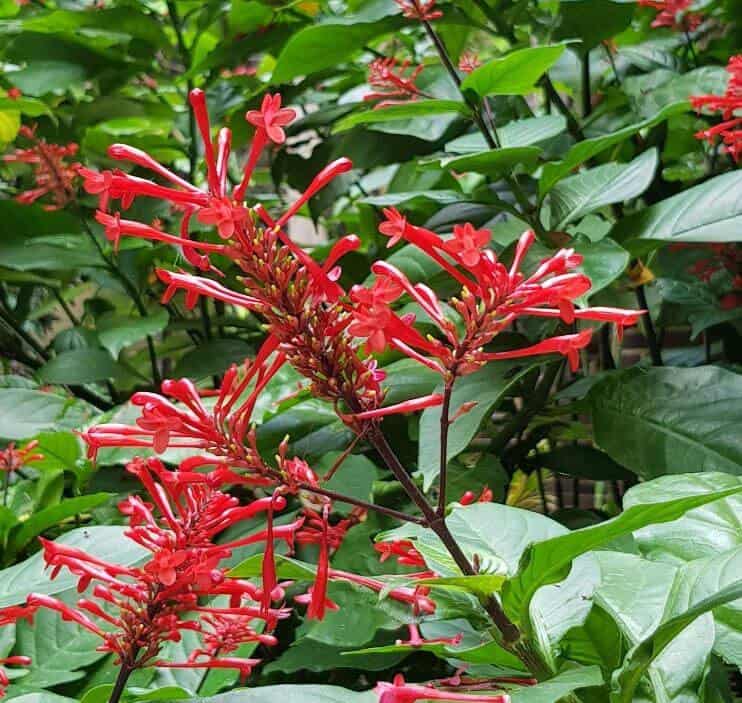Last Updated on March 11, 2023 by a Friendly Gardener
If you want a large beauty for your garden, consider the stunning Firespike plant. Not only is this plant eye-catching but it’s a magnet for butterflies and hummingbirds. Imagine the delight your garden will offer.
Botanically named Odontonema strictum, it is commonly called the Firespike, Scarlet Flame, or Cardinal Guard. The Firespike belongs to the Acanthaceae family. This perennial shrub can also be cultivated as a houseplant. Leaves are glossy deep dark green and are able to grow to eight inches in length. The shrub itself can grow from four to eight feet and perhaps a bit more, but the general size for a mature Firespike plant is two to five feet in both height and width. Flowers are truly unique in shape, usually red on a purplish stem.
To cultivate in your outdoor garden, they need to be planted when spring arrives. Summer will grace your garden with stunning blooms and may continue to winter if frost doesn’t kill them. If you live in a warm climate, the Firespike may just bloom year-round for you.
The Purple Firespike
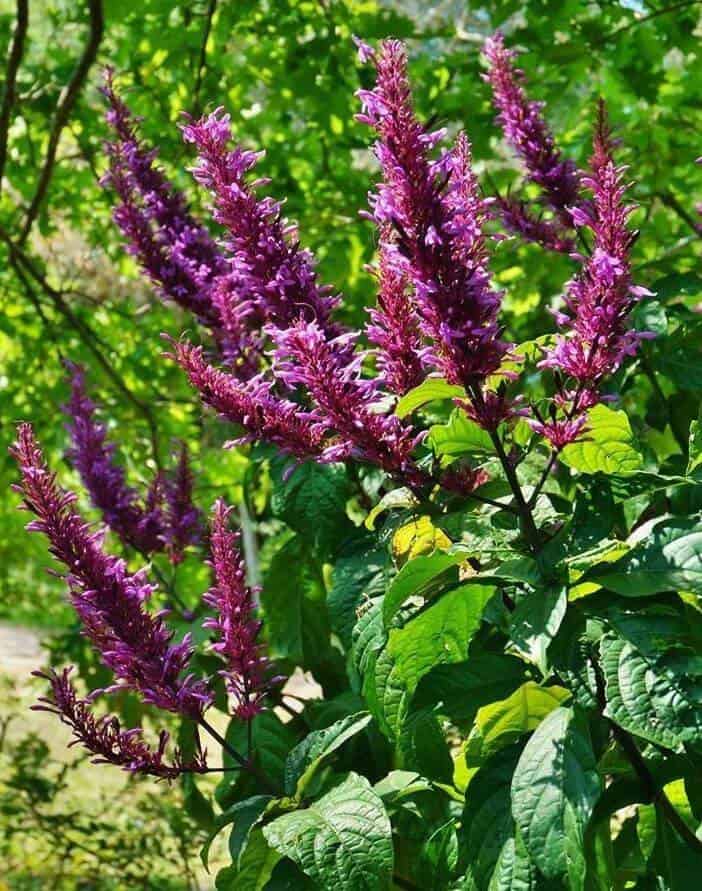
Known as the Odontonema Callystachyum, this is a Firespike plant that produces tubular purple flowers. It is an evergreen perennial shrub in locations without frost and a die-back perennial in cooler locations. The Red Firespike is more commonly available in garden centers and nurseries and is thought to be a bit hardier than the purple blossom variety. Both the purple and red flowering varieties require the same plant care.
Firespike Plant Care

These plants depend on specific environmental conditions to thrive. They are relatively easy to care for if you can reproduce their preferred growing environment. Native to Mexico and Central America, they are tropical in nature, loving both generous sunlight and water. They are adaptable to some degree growing well in both fertile soil and a sandy mix. The Firespike can be grown in a container and will act as a blooming houseplant during the winter.
Soil
If given a choice, the Firespike will opt for rich, fertile, well-draining soil. It will adapt to a sandy growing medium. For best results, choose a soil mix that is compost-based as it will provide more nutrition. While not particular about soil pH, your plant will be happier in soil that is neutral to slightly acidic. When planting makes sure your Firespike has lots of room, so plant them two to three feet apart. It can be planted successfully in heavy clay soils and wetter environmental conditions.
Light
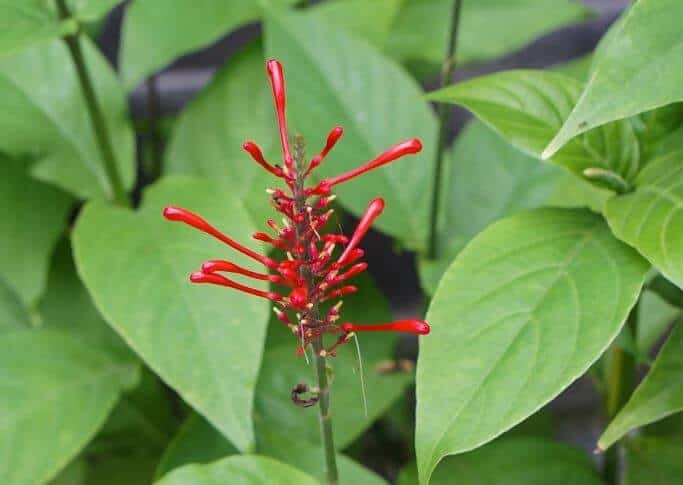
As tropical plants, they love the sun and will do well when grown in bright light. They will, however, adapt to partial shade and bloom even when in a shaded spot, but the sun is best. When cultivated in the shade, there will be fewer blossoms. Plan on giving your plant 75% or above sunlight.
Water
The Firespike plant loves to drink, so generous consistent watering is necessary. If you are cultivating this shrub in a more arid climate, plan on watering daily. If you forget, and the plant droops a bit, just water it and it will revive. You can mulch around the base of your plant to aid the soil in moisture retention.
Humidity
Your Firespike prefers humidity that is moderate to high.
Temperature
The Firespike is a lover of heat and hot temperatures. They do not tolerate the cold. They can survive a light bout of frost but will die above ground if exposed to heavy frost. When the soil bed warms, it will usually regenerate. If your area experiences only a light frost, blooms will continue until that cool weather arrives. These shrubs can be cultivated in USDA hardiness zones 8 and above. Consider climates such as Florida, southern Texas, and California. If you are due for some cold, consider bringing your plant indoors. Also, beware of windy climates as branches are not adequately strong to weather wind damage.
Feeding
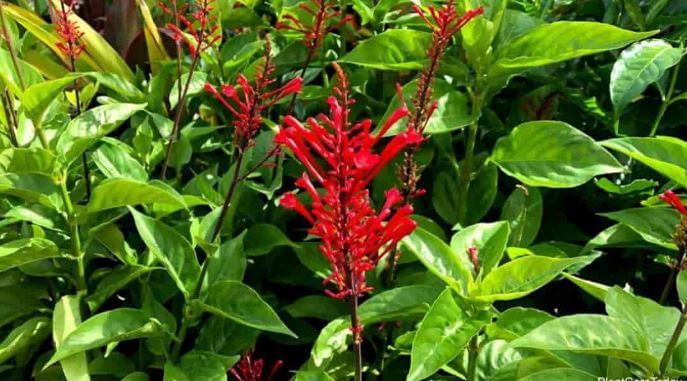
Plan on feeding your plant about three times a year. The Firespike is not a heavy feeder but will benefit from a nutrient boost. Use a slow-release balanced fertilizer in your garden for best results by applying it at least six inches from the base of your plant.
Pruning
As a low-maintenance plant, you will not need to prune regularly. Trim away branches that appear unruly, floppy, or ruin the shape of your plant.
If you are cultivating a Firespike in an area subject to light frost, you need to trim your plant to its base in the spring when there is no longer any danger of frost. This cutting back will stimulate new growth. In warmer climates, it’s sufficient to remove the flower stems once the blooms are spent again cutting to the plant’s base.
Firespike Plant Propagation
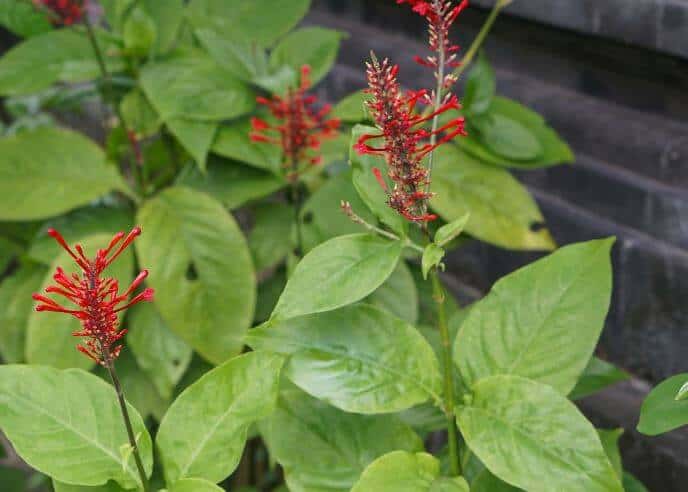
The Firespike plant is best propagated using stem cuttings. Trim a healthy branch that is a soft wood. Remove all the foliage from the bottom half of the branch. Coat the cut end of the branch with the rooting hormone. Now place your stem cutting where you want your new shrub to take root. Firespike plants root without difficulty.
Pests and Problems
This plant is generally not susceptible to pests or diseases.
Firespike Plant Toxicity
There are no indications that this plant is toxic. Whitetail deer are known to be particularly fond of the Firespike’s leaves.

